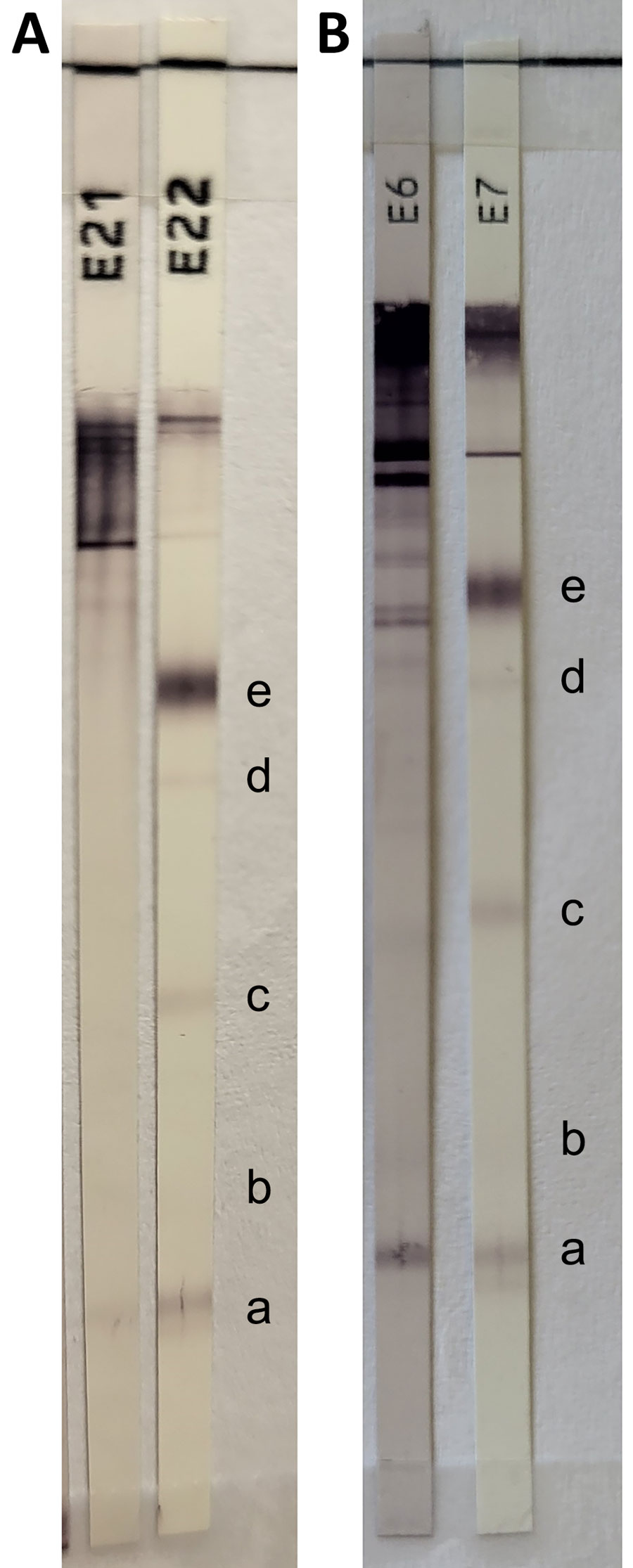Volume 31, Number 9—September 2025
Research Letter
Subarachnoid Neurocysticercosis Caused by Larval-Stage Taenia crassiceps Tapeworm, Slovenia
Figure 1

Figure 1. Equivocal results of Cysticercosis Western blot IgG (LDBIO Diagnostics, https://ldbiodiagnostics.com) assay in study of subarachnoid neurocysticercosis caused by larval-stage Taenia crassiceps tapeworm, Slovenia. Results of patient’s serum (A) and cerebrospinal fluid (B) samples show 6–8 kDa band and a weak 12 kDa band. Cysticercosis-specific bands are 6–8 kDa (a), 12 kDa (b), 23–26 kDa (c), 39 kDa (d), and 50–55 kDa (e). The presence of >2 well-defined bands among the 5 mentioned is indicative of neurocysticercosis. E21, patient’s serum; E6, patient’s cerebrospinal fluid; E7 and E22, positive controls.
Page created: July 11, 2025
Page updated: August 26, 2025
Page reviewed: August 26, 2025
The conclusions, findings, and opinions expressed by authors contributing to this journal do not necessarily reflect the official position of the U.S. Department of Health and Human Services, the Public Health Service, the Centers for Disease Control and Prevention, or the authors' affiliated institutions. Use of trade names is for identification only and does not imply endorsement by any of the groups named above.